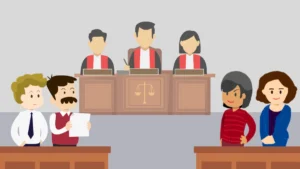When you’re preparing to issue a claim under CPR Part 7 (Civil Procedure Rules), one of the key requirements is to ensure that you have the correct address for serving your claim on the defendant. Often, claimants rely on the “last known address” of the defendant. However, determining this can be more challenging than it first appears, especially if the defendant has moved or is otherwise unreachable. In this blog, we’ll explore how to check a person’s last known address for the purposes of issuing a claim under CPR Part 7.
1. Understanding the Rules for Last Known Address
CPR 6.9 defines that the “last known address” is the address where the claimant reasonably believes the defendant still resides or carries out business. If you are issuing a claim and serving it to this address, it is crucial that you have made reasonable efforts to confirm it remains valid. If a defendant no longer lives or works at the address, your service may be deemed invalid.
2. Ways to Verify the Last Known Address
Search Public Databases |
Public databases, such as the Electoral Roll or Companies House for businesses, are some of the simplest ways to verify whether a person or company is still located at their last known address. These databases may give you an indication of when the individual or entity last updated their details. Companies House is also a good source of company director information if you need to sue them in a personal capacity as their current address will be shown on the Register.
Use Credit Reference Agencies |
Credit reference agencies such as Experian or Equifax hold detailed records of addresses linked to financial activities. While these services usually require a fee, they are often reliable sources of up-to-date information.
Contacting the Defendant Directly |
Sometimes, the simplest way to confirm someone’s address is to try and contact them. Send a letter to the last known address and see if you receive any response or whether it is returned as undelivered. If a response is returned or redirected, you may have a better idea of whether the address is still valid.
Social Media & Online Search |
In today’s digital age, people often leave a trail of information on social media. Websites like LinkedIn or even Facebook can help you determine whether a person is still living or working in a particular location. However, this should be done with caution and sensitivity to privacy laws.
Hire a Tracing Agent |
If you’re having difficulty finding the defendant’s current address, you may want to consider hiring a professional tracing agent. These agents specialize in finding people who have moved without leaving a forwarding address. A successful trace will provide you with a verified new address.
3. What to Do If You Cannot Verify the Address?
If you have tried all reasonable avenues and still cannot verify the defendant’s last known address, you can take one of the following steps:
Application for Alternative Service
You can apply to the court for permission to serve the defendant by an alternative method. This could include serving by email or even through a social media platform, depending on the circumstances.
Service on the Last Known Address
If you have no other address and believe the defendant has not moved, you may proceed with serving the claim to the last known address. However, you need to show that you’ve taken reasonable steps to confirm it remains the defendant’s address.
4. Consequences of Serving at an Incorrect Address
If a claim is served to an incorrect address and the defendant never receives it, the court may later set aside any default judgment entered as a result. This is why it’s essential to exercise due diligence when verifying a last known address.
Summing Up
Checking the last known address of a defendant is a critical step in issuing a claim under CPR Part 7. Using public databases, contacting the defendant, engaging tracing agents, and even checking social media can help confirm whether the defendant can still be reached at the address you have on file. Always take reasonable steps to ensure accuracy, as mistakes in this process can delay your claim or lead to complications later on.
Shergroup Smart Tip | Take screen shots or download report information to show the date and time you verified the address so you can show that to the Judge at any hearing if the issue of service is raised by the Defendant.
If you are unsure of how to proceed, or need professional assistance, our team at Shergroup Legal is here to help. Get in touch with us for guidance on your next steps!
For more information on enforcing judgments and serving claims, contact Shergroup today at 0203 588 4240 or email us at [email protected] outlining your issue so we can help.
By Phone | 020 3588 4240
Website | www.shergroup.com and you can chat to us from here
Email | [email protected]
Facebook | Check out Shergroup on this channel and message us
Twitter | Check out ShergroupChat on this channel and message us
LINKEDIN | Check out Shergroup’s LINKEDIN – and please FOLLOW us!
Instagram | Check out ShergroupChatter and
YouTube | Check out Shergroup YouTube Channel – and Subscribe to Our Channel!
Google My Business | https://maps.app.goo.gl/J1pUNBKfFv2SVnjQ6





